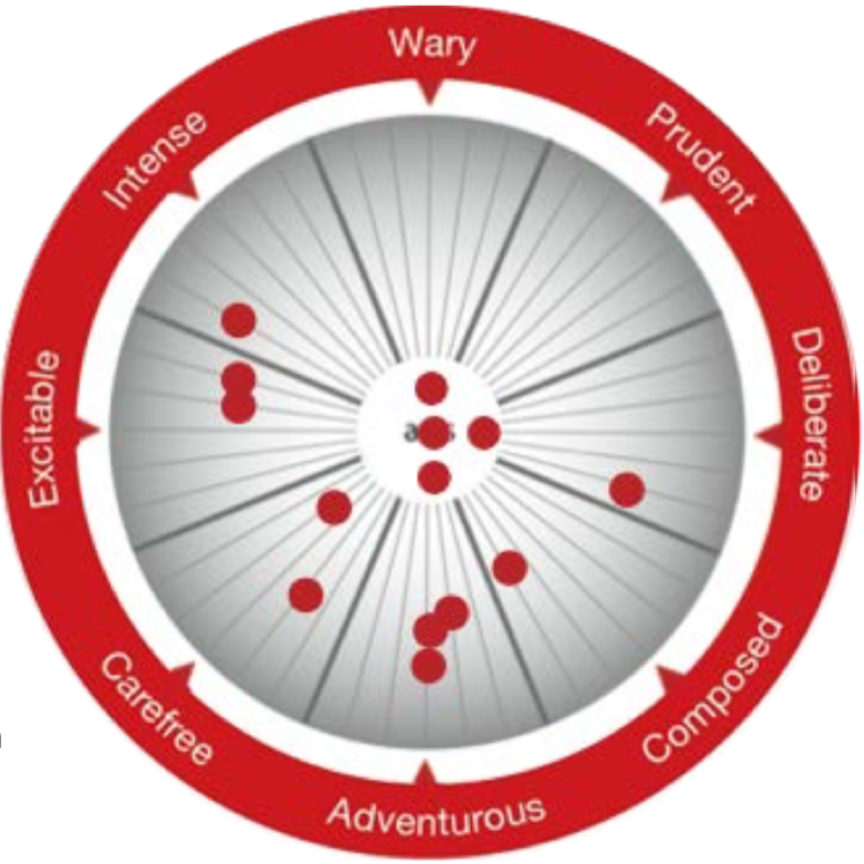Risk Type Compass: Team Conflict & Lack of Effective Interdepartmental Communication
The Situation
A leading global manufacturing company was concerned with their senior corporate risk team due to intra-team conflict, ineffective communication with the wider organisation and lack of innovation.
This long-standing team had recently been restructured with new members recruited to more senior roles in order to help bring positive changes to the risk management function. This new structure exacerbated an already difficult situation and was beginning to cause major conflict within the team.
The objective of this intervention was part of a long-term change programme to improve relationships within the team and also improve communication between the risk managers and senior management throughout the organisation.
The Solution
The team completed the Risk Type Compass personality measure and a Group Report was produced. Risk Type convergence, group factions and the dominant influence were deciphered and conclusions drawn.
There were three distinct factions: those clustering around the Excitable/Intense Risk Types, the Adventurous Risk Types and a group in the Axial category. The Adventurous Types, predominantly senior members and more recently recruited to the team, are self-confident freethinkers, willing to embrace innovation and to take some risks. The long-term more traditional members tended to be more cautious and ambivalent about risk, any enthusiasm and excitability being tempered by anxiety and apprehension. This conservatism was potentially in conflict with the ‘on-the-fly’ innovative approach of the more recent team members and a source of tension in the team.
The Results
Response to the Risk Type analysis was very positive. Participants could appreciate how everyone brings their own unique risk perspective to the table; perspectives that were complimentary rather than right or wrong.
The growing appreciation of diversity in risk perception, decision-making and communication styles helped reduce existing tensions. The team gained a better understanding of the newly appointed leader offering some foundation as to why his decision-making style and approach is so different. It also helped to open more effective communication lines.
Group members also gained an understanding of how individual Risk Type can bias their approach as risk managers. It allowed them to gain respect for the diversity of the individuals towards whom a risk management strategy is directed (departments, teams, etc.) and how this needs to be considered in their approach to risk management, particularly when communicating with other senior managers.
Situation
• Leading global manufacturing company struggles to build a cohesive risk management team
Solution
• Risk Type Compass is used to identify convergence, group factions and dominant influences within the team
Results
• Team members discovered an appreciation of differing Risk Types and increased the effectiveness of their communication within the team and to the wider business

Download a PDF version of this Case Study here.